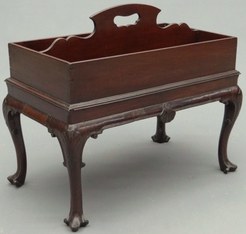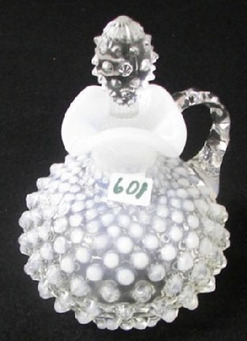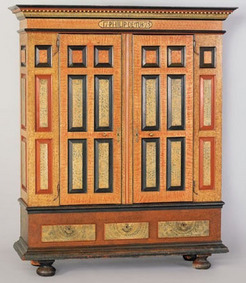 Canterbury is one of those terms that, when the piece to which it originally applied fell out of fashion, was simply picked up and applied a second time to another form that was at least in some ways similar to the original. A canterbury in the 18th century was a low wooden stand, typically on casters, with a divided top, the purpose of which was to be set near the dining table and hold plates and cutlery. The form’s name is said to be a nod to the Archbishop of Canterbury who was an early adopter.
Canterbury is one of those terms that, when the piece to which it originally applied fell out of fashion, was simply picked up and applied a second time to another form that was at least in some ways similar to the original. A canterbury in the 18th century was a low wooden stand, typically on casters, with a divided top, the purpose of which was to be set near the dining table and hold plates and cutlery. The form’s name is said to be a nod to the Archbishop of Canterbury who was an early adopter.
At some point, someone took the idea of the divided tray, deepened the wells, and, in some cases, added more compartments to create another portable piece of furniture, this one with slatted spaces for most typically sheet music or magazines and newspapers. These pieces are the forebearers of the modern magazine rack and in typical Victorian fashion, the form gets more elaborate as the 19th century wears on. By the latter part of the century, canterburies have end panels with music-inspired shapes (treble clefs or lyres/harps) and an upper shelf or tray top has been added.
Canterburies still have solid value with collectors, as they remain very useful for holding the exact things they were originally designed to hold and because they were used for the better part of two centuries at the very least, they’re available in a variety of styles and conditions.

![Furniture: Highboy; Queen Anne, Maple & Pine, Rob Davis, signed, 2-Part, Japanned. A rare Queen Anne japanned maple and pine [highboy or] high chest of drawers, signed "Rob Davis" in script, Boston, Massachusetts, 1735-1739.](http://www.prices4antiques.com/item_images/medium/21/51/88-1.jpg)





